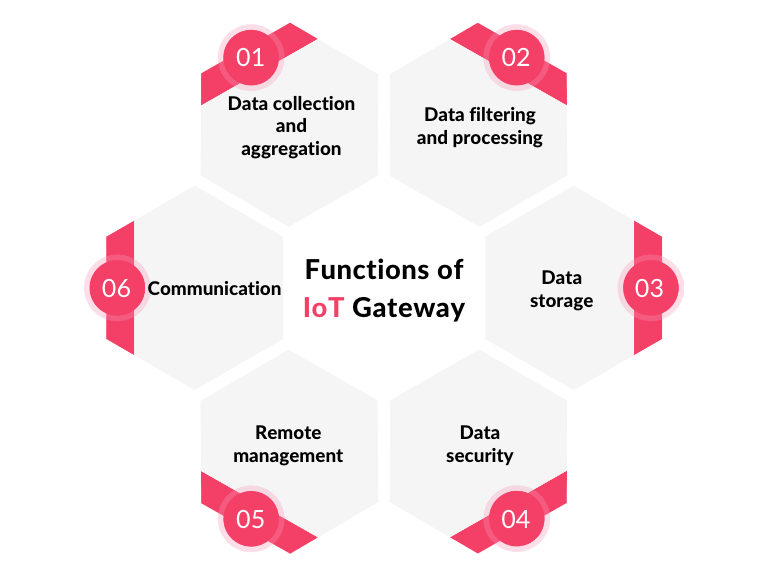An IoT (Internet of Things) gateway is a device that serves as the connection point between IoT devices and the internet. It acts as a bridge between the physical world of IoT devices and the digital world of the internet, allowing for the seamless transfer of data between the two.

There are several key functions that an IoT gateway can perform, which include:
1. Data collection and aggregation
IoT gateways can collect data from multiple IoT devices and aggregate it into a single stream. This allows for more efficient use of network resources and makes it easier to analyze and process the data.
2. Data filtering and processing
IoT gateways can also filter and process the data they collect. This might include removing redundant or irrelevant data, as well as performing basic calculations or conversions on the data.
3. Data storage
IoT gateways can store data locally or in the cloud, depending on the needs of the system. This allows for data to be analyzed and used even when the IoT devices are offline.
4. Data security
IoT gateways can also provide security features such as encryption, authentication, and access control. This helps to protect the data being transferred and the IoT devices themselves from unauthorized access or tampering.
5. Remote management
IoT gateways can also be used to remotely manage and update IoT devices. This might include updating firmware, configuring settings, and monitoring the status of the devices.
6. Communication
IoT gateways can communicate with other devices and systems, such as cloud services, mobile applications, and other IoT devices. This allows for the integration of IoT devices into larger systems and enables the creation of new applications and services.
IoT gateways play a crucial role in the functioning of IoT systems. They serve as the backbone of the system, enabling the seamless transfer of data and enabling new applications and services to be built on top of the data generated by IoT devices.
When setting up an IoT gateway, there are several things to keep in mind to ensure a successful deployment. Some of these include:
Security
IoT gateways handle sensitive data and are often connected to the internet, so it’s important to implement robust security measures to protect against unauthorized access and data breaches. This might include encryption, authentication, and access control mechanisms.
Scalability
As the number of IoT devices connected to the gateway increases, it’s crucial to ensure that the gateway can handle the increased load. This might involve using a gateway with powerful processing capabilities or using cloud-based gateways that can scale as needed.
Connectivity
The gateway should be able to connect to a wide range of IoT devices and protocols. This might include support for wireless protocols such as Zigbee, Z-Wave, and Bluetooth, as well as support for wired protocols such as Ethernet and USB.
Compatibility
The gateway should be compatible with other systems and services, such as cloud services and mobile applications. This allows for the integration of IoT devices into larger systems and enables the creation of new applications and services.
Network architecture
It’s important to design the network architecture that will be used with the IoT gateway. This includes determining how the devices will connect to the gateway, how the gateway will connect to the internet, and how the data will be routed between devices.
Power consumption
Select a gateway that is energy-efficient and that can operate for a long period of time without requiring frequent battery replacement or recharging.
Remote management
The gateway should provide an easy way to monitor and manage the devices connected to it. This might include a web-based interface or a mobile application.
Cost
Consider the cost of the gateway and any associated costs, such as the cost of connecting the gateway to the internet or the cost of storing data in the cloud.
To sum it up, IoT gateway is a device that serves as the connection point between IoT devices and the internet, it’s responsible for data collection, aggregation, filtering and processing, storage, security and remote management, it plays a crucial role in the functioning of IoT systems and enables the seamless transfer of data and enables new applications and services to be built on top of the data generated by IoT devices.
